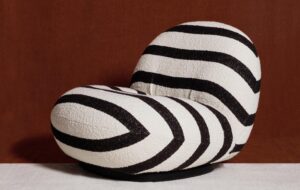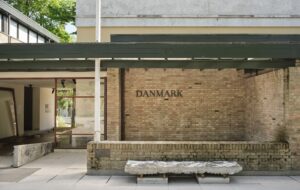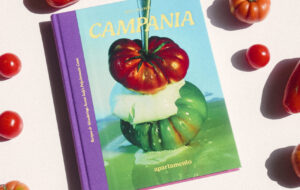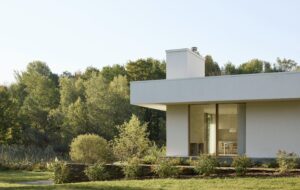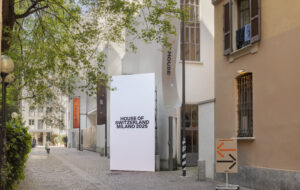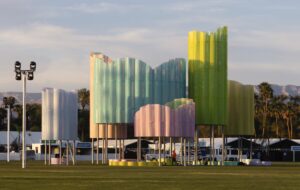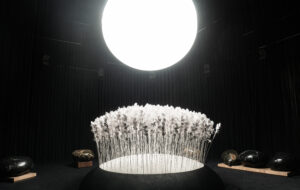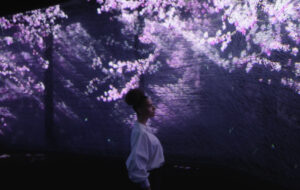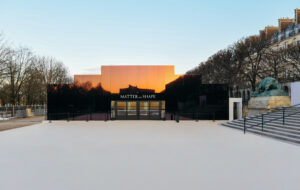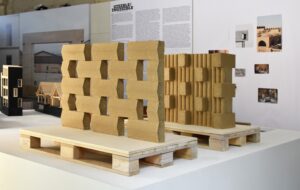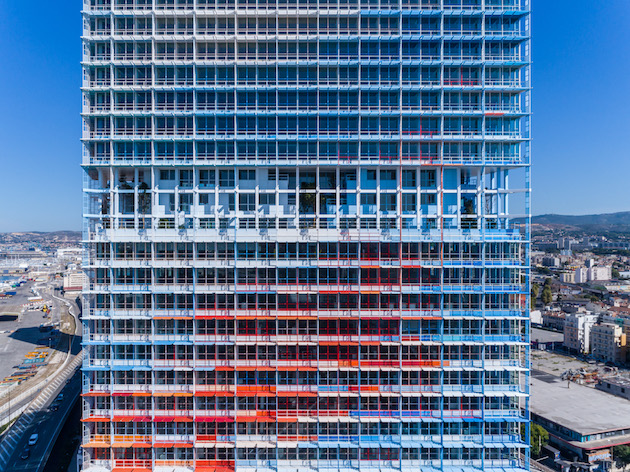 Jean Nouvel’s La Tour Marseillaise in Marseille, France. Photo: Wearecontents
Jean Nouvel’s La Tour Marseillaise in Marseille, France. Photo: Wearecontents
Compared with most bland office towers, La Tour Marseillaise is breath of fresh Mediterranean air. Is this what it looks like when Jean Nouvel is having fun?
Sudden urban development brings a lot of surprises, says Jean Nouvel, sitting in the 27th floor of his new red, white, and blue-splashed skyscraper.
Nouvel’s new 31-storey office building, La Tour Marseillaise, sits alongside Zaha Hadid’s CMA CGM (completed in 2011) as one of the two tall buildings in Marseille. It is built with a zen resignation to transience. For now it is a striking new landmark. But the tower accepts, its architect explains, “you never know what the future is.”
France’s second city is in the midst of a rapid project of urban renewal that has continued full speed since the city’s European Capital of Culture designation in 2013, with waterfront industrial infrastructure being re-appropriated wholesale as restaurants and museums. The current skyline, with just two built landmarks, is likely a ‘very short and very rare’ situation, says Nouvel. Two more towers have already scheduled to be built next door.
‘In the next decade other buildings will arrive. But this moment, it is a kind of stage,’ he says, making the most of that last word’s double-meaning – as both fleeting instant and the theatre’s front end. ‘The port is a stage, the quays are a stage. And on this stage, you have two actors, a man and a woman, probably,’ he laughs.
Zaha Hadid’s CMA CGM Tower (left) and La Tour Marseillaise. Photo: Michele Clavel
Nouvel wants the two towers to form a kind of scenography. He sees Zaha’s twisting corporate tower as a slender figure in a big wedding dress and his block, in the adjacent plot, as a multicoloured page boy, holding the train.
Shifting in and out of phase as visitors approach down Marseille’s sweeping shoreline: ‘There’s this dance, it’s like a paso doble or something,’ he says.
Nouvel is careful to clarify that the scene is no joke but what we get certainly lacks the tiresome self-seriousness of most office buildings. ‘It’s a game to call it ‘La Marseillaise’. It’s not a joke, but it’s something like that,’ he says, relaxed on the eve of it’s official opening on 25 October. ‘When you call it La Marseillaise, [it invokes] the national hymn, the national colours. But this is the opposite.’
By this he means that, in person, La Marseillaise is not as brashly tricolor as digital renderings made it look. Nouvel describes 27 shades crowdsourced from the local area: ancient Provençal terracotta roof tiles, weathered cruise ship liveries, shades from Zaha’s tower next door, and, Nouvel (a big football fan) admits, the sky-blue jersey of local team Olympique de Marseille.
It’s a relief that there is none of the tacky arbitrariness of Renzo Piano’s Central St Giles in London. The colours – which on a digital screen resemble a pixelated JPEG – are earthier ochres, almost industrial in their greyish-blues. Nouvel says the paints are designed to fade further in France’s sunniest city.
Detail of the brises soleils. Photo: Michele Clavel
That is the biggest surprise: that the colour scheme that seemed a one-note joke designed to spotlight the new tower ends up as a camouflage that subtly softens the facade whether looking against the sea, city or mountains. Rearing up alongside Zaha’s, Nouvel’s is without doubt the more sympathetic – a barely-there office block that seems like a light touch by the 76-year-old, creating a fairly gentle echo of its surroundings.
In doing so, it might be the first skyscraper to reference not just its post-industrial context but the churning process of urban regeneration itself, with reds and whites camouflaging against the surrounding cranes and a brise soleil that will look a lot like scaffolding even when it is complete. Nouvel describes it variously as a non-tower, a chameleon and a sketch of a building rather than a finished object. ‘I did not want to design, really’, he says, perhaps half-joking.
Inside, it’s sketchier, still, with raw concrete and light wood making it look somewhat like a trendy co-working space. Nouvel’s favoured use of untinted glass paired with external shades, also seen in Barcelona’s Torre Agbar, achieves the desired blurring of inside and outside, by matching the interiors to each floor’s to external colours. Across the office, you’re looking out at a mostly uninterrupted postcard view; 95 per cent of the offices look out onto the Mediterranean.
But Marseille is hot. To avoid a repeat of the issues seen in Barcelona, where workers complained of dazzling, draining rays, the external shades will need a lot of support from the air conditioning. To save on energy, Ateliers Jean Nouvel has apparently implemented smart system that sucks up water from the sea.
Above all, Nouvel has built a landmark for its place in a growing city, where the skyline is – for now – still dominated by natural landscape of mountains and rocky islands. Nouvel says he wanted to give a gift to the Marseillaise: a building block toward the right type of urban redevelopment, which in addition to Hadid includes offerings in the form of Foster + Partners’ Old Port, Kengo Kuma’s FRAC arts centre, and Stefano Boeri’s cantilevered Villa Méditerranée.
Such regeneration will include office buildings that, for all the talk of dance and scenography, look a lot like office buildings. But as an alternative to the ‘parachute buildings’ of bland corporate glass and steel that Nouvel calls ‘a disaster on earth’, the Pritzker-winner’s careful, colourful, contextual skyscraper approach is a change of pace that would be welcome for most business districts.

